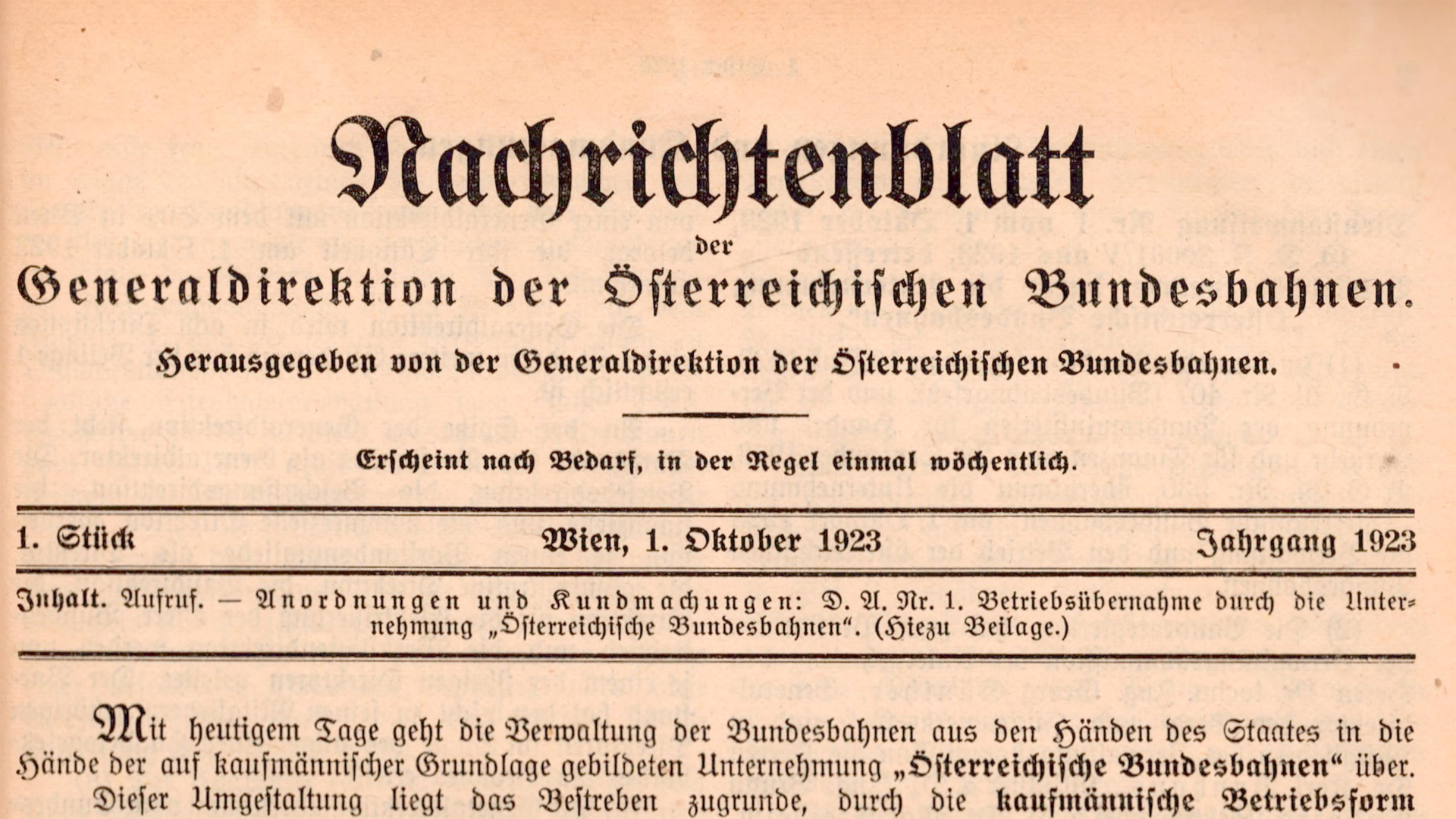
1923-1938
How it all began
Electrification, Austrofacism and travel boom: ups and downs.



Savings, staff cuts, economic crisis: a difficult start.
The Austrian Federal Railways, known as Österreichische Bundesbahnen (ÖBB), became an independent commercial entity on 1 October 1923, a major milestone. With the enactment of a new federal law, the railways were no longer under the direct administration of the Federal Ministry of Trade and Transport. While the transport minister maintained oversight of ÖBB, the technical matters were now entrusted to the employees of the Austrian Federal Railways.

The initial phase proved incredibly challenging due to enormous inflation following the war. Prior to the boom of the 1920s, the circumstances were bleak and austere. ÖBB simply didn't have enough money at its disposal when it was founded, so the logical consequence was to implement cost-saving measures. Clear directives were issued from the highest levels of government, demanding a reduction of a quarter of the workforce within five years. Given the approximately 113,000 individuals employed by the railway during that period, this mandate translated to a reduction of nearly 30,000 employees by 1928.

At the same time, the switch from steam locomotives to electrically powered railways, known as "electrification", promised more cost-effective operations. However, progress in this area was sluggish. There was opposition from influential figures in the coal industry, who sought to impede the expansion of electrification. The economic turmoil caused by the 1929 stock market crash further exacerbated the situation. It should come as no surprise then that ÖBB's financial statements were far from satisfactory in its initial years. The prevailing circumstances were beyond suboptimal.


Unless otherwise stated, the image rights are subject to © ÖBB Infra.